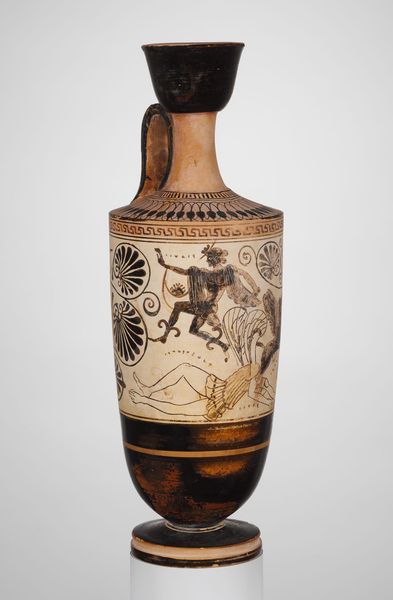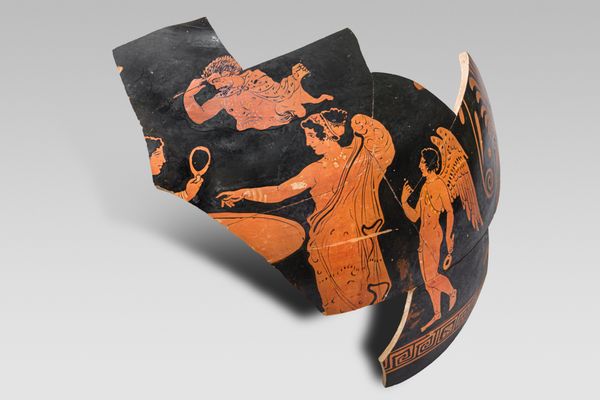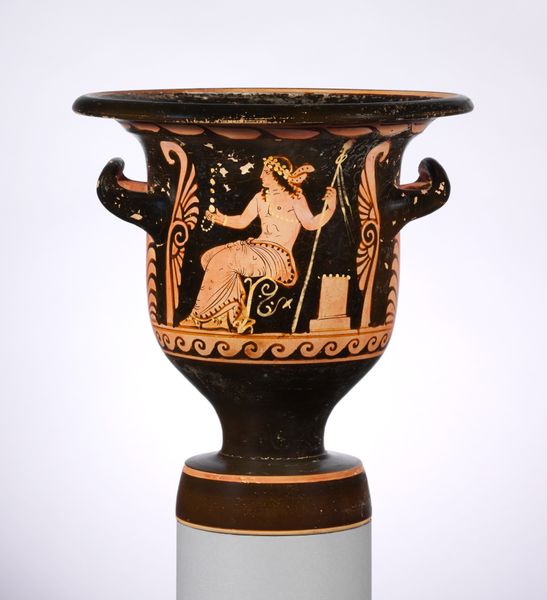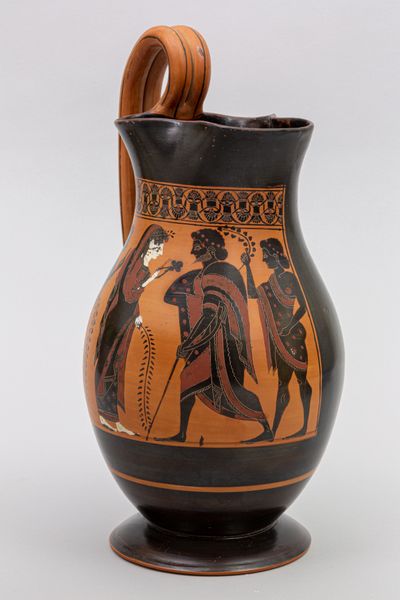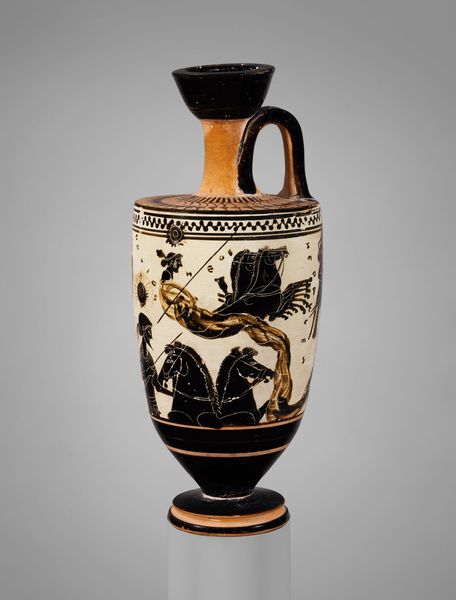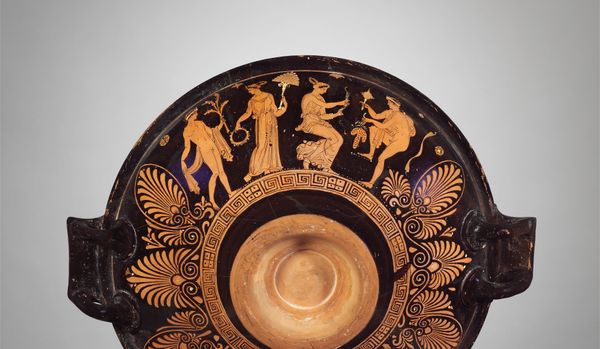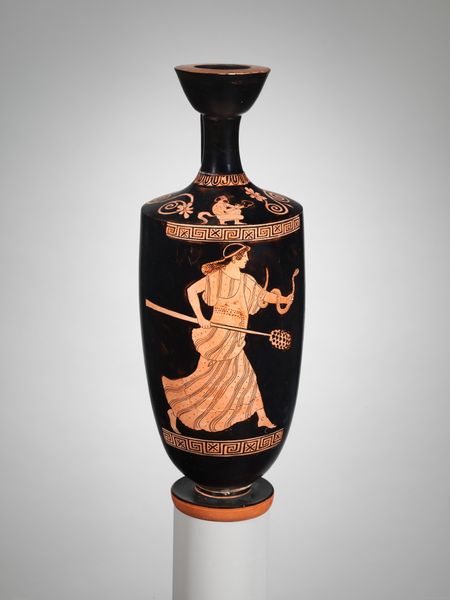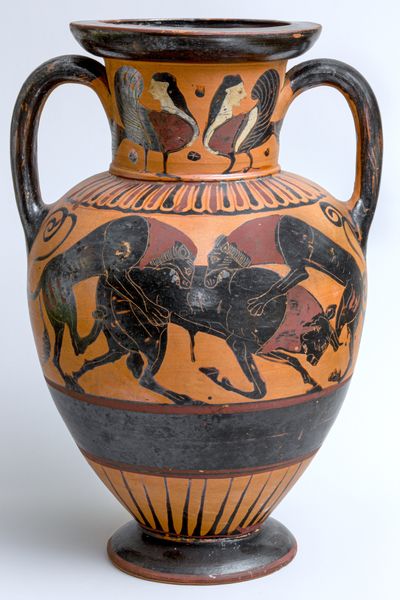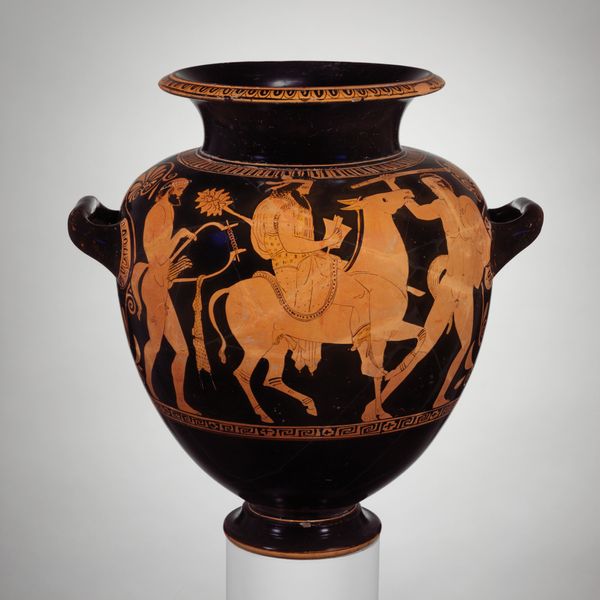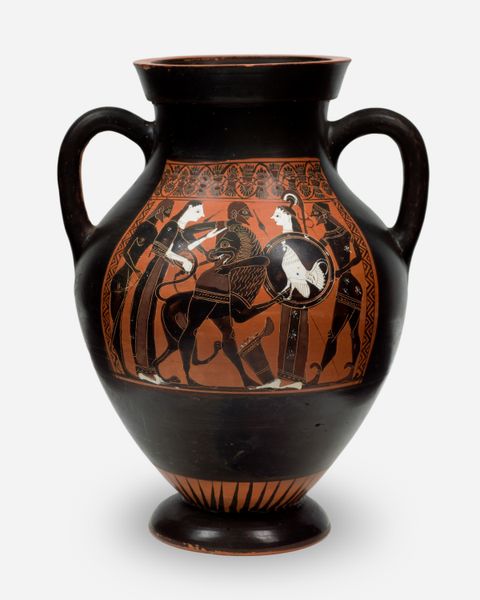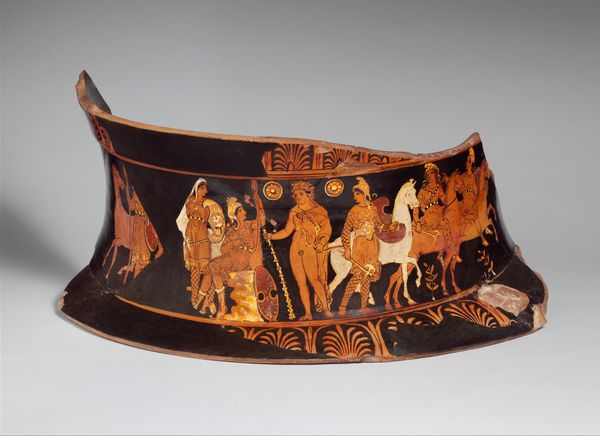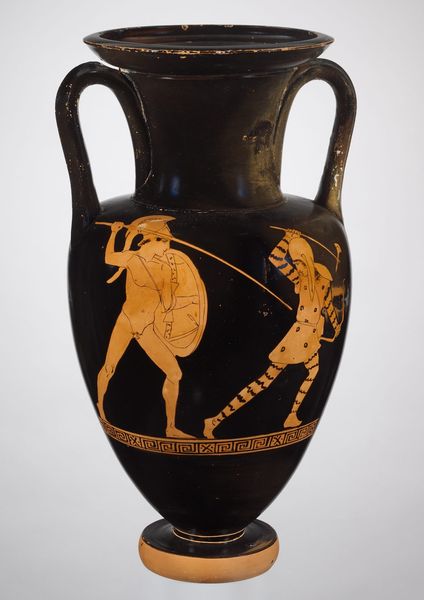
Fragmentary terracotta loutrophoros (ceremonial vase for water) 440 BC
0:00
0:00
drawing, ceramic, terracotta
#
drawing
#
greek-and-roman-art
#
landscape
#
ceramic
#
figuration
#
ancient-mediterranean
#
ceramic
#
terracotta
Dimensions: H. as restored 18 1/4 in. (46.4 cm)
Copyright: Public Domain
Editor: This is a fragment of a terracotta loutrophoros, a ceremonial vase, dating back to 440 BC and attributed to the Group of Polygnotos. Looking at this vase, what immediately strikes me is the dynamic depiction of the figures despite its fragmented state. What can you tell me about the context this object was created within? Curator: This loutrophoros, used to carry water for wedding rituals or funerary rites for the unmarried, provides fascinating insight into Athenian social customs and the politicization of imagery. The depiction of figures, possibly a wedding procession, isn't merely decorative; it reinforces societal expectations. Think about the vase's public role in reinforcing traditions surrounding marriage and death – ceremonies highly significant for the polis' social cohesion. Does seeing the function and the imagery together give you other ideas about it? Editor: Yes, it does. Considering its purpose in ritualistic events, the imagery does seem intended to communicate ideals and solidify societal norms, maybe even propagandize them a bit. Curator: Precisely. And notice how even in this fragment, the style and the medium speak to the advanced ceramic traditions of Athens. How would displaying vases like these publicly influence community values, you think? Editor: Well, because everyone could view the image and connect its symbols to the broader function, this type of vase naturalized the cultural practices and the implied beliefs surrounding the ceremonies it took part in. So I wonder who had the most access to viewing it. Curator: It’s likely this piece resided in elite homes and burial grounds, but it reveals how integral public rituals and their associated material culture were in shaping the Athenian worldview. Editor: That's amazing to consider; seeing the political role of such intimate, ceremonial objects. It makes the object much richer. Curator: Absolutely. And it highlights the lasting influence of Greek artistic conventions on social behavior through ritual.
Comments
No comments
Be the first to comment and join the conversation on the ultimate creative platform.
